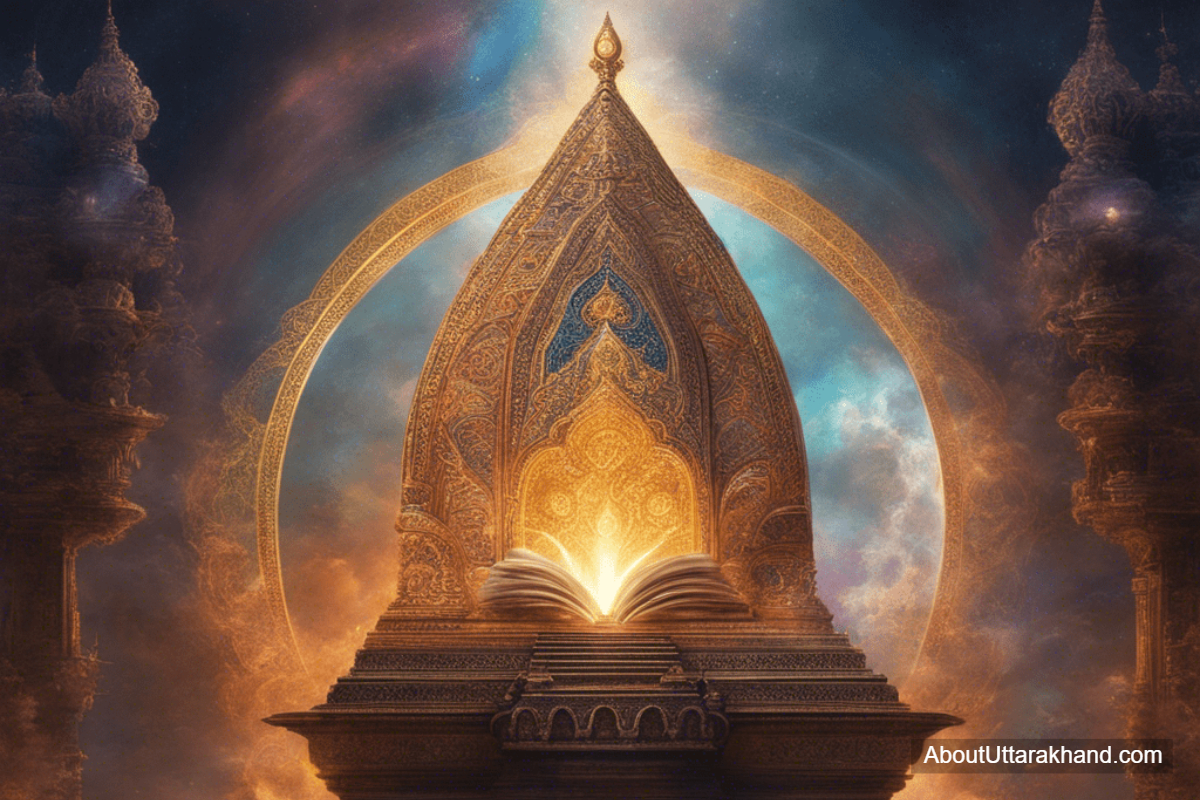Samhitas
In Hindu texts, the word Sa?hita, which comes from the language Sanskrit, has a deeply important meaning. This word comes from the root words that mean 'put together,' 'joined,' or 'union,' which makes me think of a carefully put together group of texts or verses. If you think about the word 'Sa?hita,' it doesn't just mean collecting books; it also means putting them together in a way that follows rules. This is what Vedic literature is based on.
According to Hinduism, the Sa?hita are the oldest texts that can be found in the Vedas, which are the religion's holy books. Some of the things that are in these old Sanskrit texts are mantras, hymns, prayers, litanies, and blessings. They are poetic and cover a wide range of topics. It is thought that the Sa?hitas, which contain the spiritual and intellectual teachings of old sages and seers, are the most important books in Hinduism.
Table of Contents
SamhitasDetails About Samhitas
Lessons and Teachings Of Samhitas
Some Facts About Samhitas
To Conclude

Samhitas - Holy Book Of Hinduism | Photo: AboutUttarakhand.com
Details About Samhitas
The Sa?hitas are very important in Hinduism because they are the basis of the Vedic heritage. Believed to be divine revelations of cosmic truths, these ancient texts written in Sanskrit are admired for their deep insights, poetic beauty, and ritual importance.
The oldest and most respected of the Vedic books is the Rig Veda Sahita, which is made up of hymns to different gods, cosmic forces, and natural events. Within its ten mandalas, or books, there is a large collection of poems that are thought to have been written by various sages and seers. These poems include prayers, invocations, and philosophical musings.
Along with the Shukla (white) and Krishna (black) branches, the Yajur Veda Sahita focuses on the practical side of Vedic customs and sacrifices. It gives priests detailed directions and formulaic chants to use during ceremonies. It stresses the importance of doing rituals correctly to bring in divine blessings and keep the universe in balance.
The melodic singing and musicality of the Sama Veda Sahita come mostly from the Rig Veda. During rituals, these hymns are sung to create a harmonious link between the earthly and heavenly realms, call upon the presence of God, and clean the air.
Unlike the other Vedas, the Atharva Veda Sahita contains a wide range of material, such as hymns, magic, charms, and incantations. It covers many areas of human life, like health, wealth, and safety, giving useful advice and old stories to help people deal with the problems they face every day.
Within Hinduism, the Sa?hitas represent the spiritual, philosophical, and cultural heritage of old India. They show people how to find themselves, grow spiritually, and become one with God. For generations, these holy books have inspired reverence, devotion, and life-changing insights in believers through their timeless lessons and ritualistic practices.
Lessons and Teachings Of Samhitas
If you are looking for spiritual guidance, the Hindu Sahitas can help you a lot. Respected as divine revelations of cosmic truths, these old texts give us clues about the nature of existence, the point of life, and how to behave morally.
The Sahitas teach that all beings are connected and that life is one. Using hymns, prayers, and invocations, the texts show that all of creation is filled with divine awareness and that all living things are linked in a web of cosmic harmony.
There is also a lot of emphasis in the Sahitas on living a good life and acting in an honest way. These teachings encourage good behaviour by encouraging ideals like honesty, kindness, nonviolence, and self-control. Adhering to these ideals can help people find inner peace, make friends, and improve society as a whole.
Furthermore, the Sahitas give information about the nature of God and how to ask for God's gifts. Texts include songs and prayers to different gods and cosmic forces that help people connect with the divine and ask for help, protection, and spiritual illumination.
Additionally, the Sahitas teach about the significance of rituals and how they help keep the universe in balance and order. It is believed that sincere and devotional rituals and ceremonies can clean the mind, body, and spirit and bring people into harmony with the divine forces that run the world.
The Sa?hitas' lessons and teachings are like a lighthouse for people who are looking for the spiritual road. They give timeless wisdom, moral guidance, and useful information about how to reach spiritual realisation. Understanding oneself, their place in the universe, and their connection with the divine can be improved by reading and thinking about these holy books.
Some Facts About Samhitas
The Samhitas, which are the central texts of Hinduism, are full of spiritual meaning, deep knowledge, and a lot of history. These old texts are important because of the following:
Antiquity: The Sa?hitas are some of the world's oldest religious texts. They were written during the Vedic time, which was around 1500 BCE to 500 BCE. These writings are thought to be the earliest in ancient India. They contain the spiritual and cultural heritage of the early Vedic culture.
Spiritual Revelation: The Sa?hitas were not written by humans, but by something called 'sruti,' which means 'that which is heard' or 'revealed.' Ancient sages and seers are thought to have received the hymns and verses in these books directly from God.
Organisation: The Sahitas are divided into four main groups, each representing a different Veda: the Rig Veda, the Yajur Veda, the Sama Veda, and the Atharva Veda. Within each Veda, there are different parts, such as the Sahita itself and other works like the Brahmanas, Aranyakas, and Upanishads.
Content:Included in the Sahitas are a variety of writings, such as hymns, prayers, invocations, rituals, and philosophical musings. Speaking about different parts of life, like cosmology, worshipping nature, and the search for spiritual enlightenment, they give us clues about how reality works and what our ultimate goal in life is.
Ritualistic Importance: The Samhitas are very important to Hindu ceremonies and rituals because they contain the liturgical formulas, chants, and mantras that priests use during functions of prayer and sacrifice. According to some beliefs, these practices create a holy link between the worshipper and the divine, which leads to spiritual growth and inner change.
Preservation: Although the Sahitas are very old, they have been carefully passed down through oral custom and written records for thousands of years. As a source of spiritual inspiration and direction for future generations, they will continue to be studied, recited, and revered by millions of Hindus around the world.
Simply put, the Sa?hitas are timeless collections of spiritual knowledge and cultural heritage. They are the essence of Hinduism's spirituality and give deep insights into the nature of life and the search for spiritual realisation.
Cat : Spiritual, CatF : Spiritual














To Conclude
As a conclusion, the Sahitas are the most important part of Hinduism's spirituality. They contain the ancient knowledge and holy revelation that have been used to guide seekers for thousands of years. According to millions of followers around the world, these holy books continue to inspire respect, devotion, and spiritual growth through their deep lessons, beautiful poetry, and ritualistic meaning. As collections of universal truths and moral guidelines, the Sa?hitas provide timeless advice on how to deal with life's difficulties and find one's most important goal.
Reading the Sahitas, singing hymns, doing practices, or thinking about philosophical ideas can help you find yourself, grow spiritually, and become one with God. By thinking about how important these old texts were, we are reminded of Hinduism's lasting legacy and how its holy lessons are still relevant today.

Belle Fable, keeps your trend ahead!
Gaumukh Glacier
The stunning Gaumukh Glacier, in the Uttarkashi region of Uttarakhand, India, is situated close to Gangotri and framed by the towering Garhwal Himalayas. Glaciers like this one attract tourists, hikers, and nature lovers from all over the globe because of the deep religious significance they have for Hindus as the headwaters of the holy Ganges River. The ascent to Gaumukh is an adventure in body and spirit, providing an opportunity to commune with the holy and the natural world.
Nandhaur Wildlife Sanctuary
The Nandhaur Wildlife Sanctuary is a haven for wildlife and stunning scenery, set in the tranquil hills of Uttarakhand. This sanctuary, in the Nainital District close to Haldwani, is a paradise for people who appreciate nature and animals. Its varied habitats, which include grasslands, ponds, and thick forests, have earned it recognition across its 269 square kilometers of territory.
Sonanadi Wildlife Sanctuary
The Sonanadi Wildlife Sanctuary invites animal lovers and nature lovers to come and enjoy the quiet beauty of Uttarakhand's serene surroundings. Hidden in the Nainital District, not far from Nainital, lies a refuge that begs to be discovered. Its varied wildlife and flora make this area, which covers around 301.18 square kilometers, a popular destination for ecotourists and those interested in biodiversity.
Binsar Wildlife Sanctuary
The Binsar Wildlife Sanctuary is a haven for wildlife and a monument to Uttarakhand's rich biodiversity, is situated in the picturesque Kumaon Himalayas. Nature lovers and wildlife aficionados will find this refuge, situated near Almora in the Almora District, to be a paradise. Covering about 47.04 square kilometers, it is famous for its verdant forests, varied fauna, and breathtaking views of the Himalayan mountains in the distance.
Tawaghat Wildlife Sanctuary
The Tawaghat Wildlife Sanctuary is a haven for adventurers and ecotourists, tucked away in the foothills of the towering Himalayas. This hidden gem of a sanctuary is located near Dharchula in Uttarakhand's Pithoragarh District. Despite its relatively tiny size (around 70 square km), this animal sanctuary is just as magical as any other.
Chilla Wildlife Sanctuary
.The Chilla Wildlife Sanctuary, located on the banks of the pure Ganges River, is a living monument to the beauty and variety of Uttarakhand's natural landscape. This sanctuary is a paradise for anyone who love nature and wildlife; it is located in the Pauri Garhwal District, close to Rishikesh. Covering over 249 square kilometers, it is a major wildlife sanctuary in the state that provides a peaceful haven amidst the majestic Himalayas.

